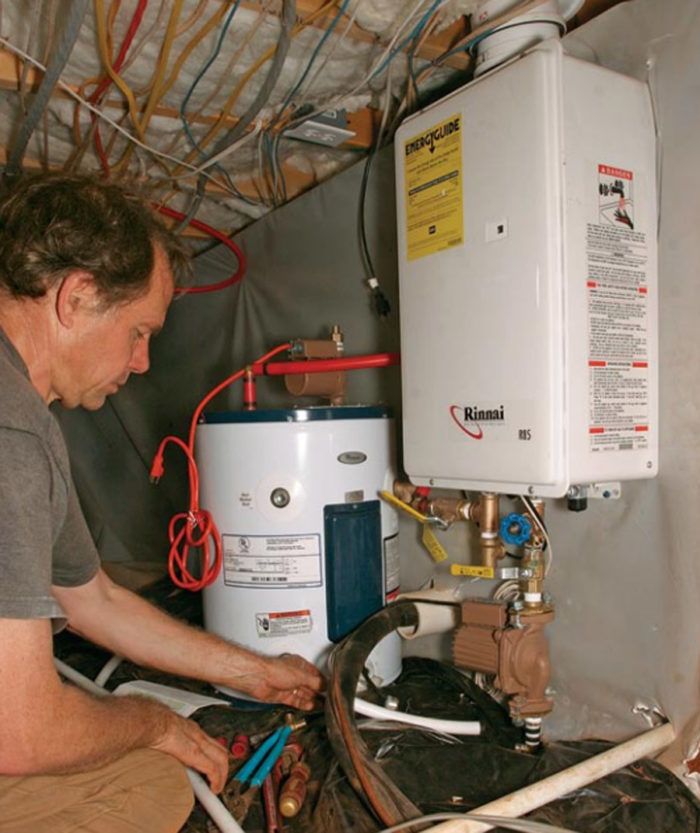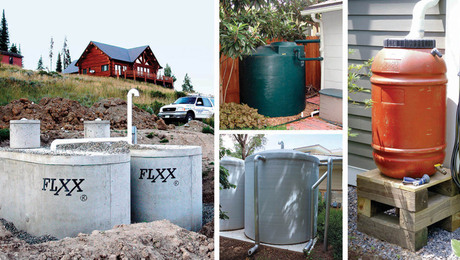Why Add a Tank to a Tankless Water Heater?
Instant water heaters save energy and offer endless hot water, but not without some problems. A small tank and a big pump can fix the flaws.

Magazine extra: Learn how a solar water heater and radiant floor heat help boost the performance of tankless water heater systems.
Mention tankless water heaters in a room full of plumbers, and the language can get heated pretty quickly—and that language isn’t pretty.
Also known as demand water heaters, these compact units have long been used in Europe and in other parts of the world where energy costs are high. Here in the United States, we early adopters remember that in the 1980s, we installed units that roared like jet engines. The slower the hot water ran, the hotter it got, so adjusting the water temperature in the shower was often a challenge. Many of us installed tankless water heaters only to go back later to replace them with tank-type units.
Today’s tankless heaters have better control circuitry and perform more efficiently than older models. My company installs a gas or propane tankless water heater in every house we build (electric models don’t deliver the performance we need). We have many happy customers, but we’ve learned that it’s not enough simply to replace a tank-type water heater with a tankless water heater.
Cold-water surprise effect
Picture this: The plumber has just finished hooking up a new high-efficiency gas-fired tankless water heater. Dad jumps in the tub and enjoys his shower, hot to the last drop. Five minutes later, Mom hops in. The water in the pipes under the house is still warm because the pipes are insulated, but the heat exchanger inside the water heater is dead cold. When Mom turns on the hot water, the burners in the heater go to work making hot water, but the cold water is out of the gate and heading straight for Mom. She is well into her shower when a slug of cold water hits. “Yow!” she cries. “This energy efficient water heater isn’t so great after all!”
There’s an easy solution to this problem: Place a small (10-gal.) electric water heater in line between the tankless water heater and the point of use. The heavy lifting of heating the cold water is done by the tankless water heater, giving you endless hot water. Before the slug of cold water from the tankless heater reaches the showerhead, it mixes with the hot water in the small tank, preventing the icy blast. By locating the small tank in a closet or under a vanity in a bathroom, you can enjoy the convenience of instant hot water with the efficiency of the tankless water heater.
Drooping-pressure effect
The small-tank solution above can solve one problem with tankless water heaters, but it doesn’t solve another: the fact that a water heater’s output is limited by its heating capacity, measured in Btus per hour.
The warmer the water is as it enters the heater, the easier it is for the heater to keep up with demand. With incoming water at 45°F, a 195,000-Btu-per-hour heater produces approximately 5 gal. per minute (gpm). Even with warmer water coming in, the output is limited, though not as much. If two people want to use hot water at the same time, this 5 gpm will be diminished, dropping the pressure in the hot-water line, but not the cold.
For more photos and details on tankless water heaters, click the View PDF button below.

























